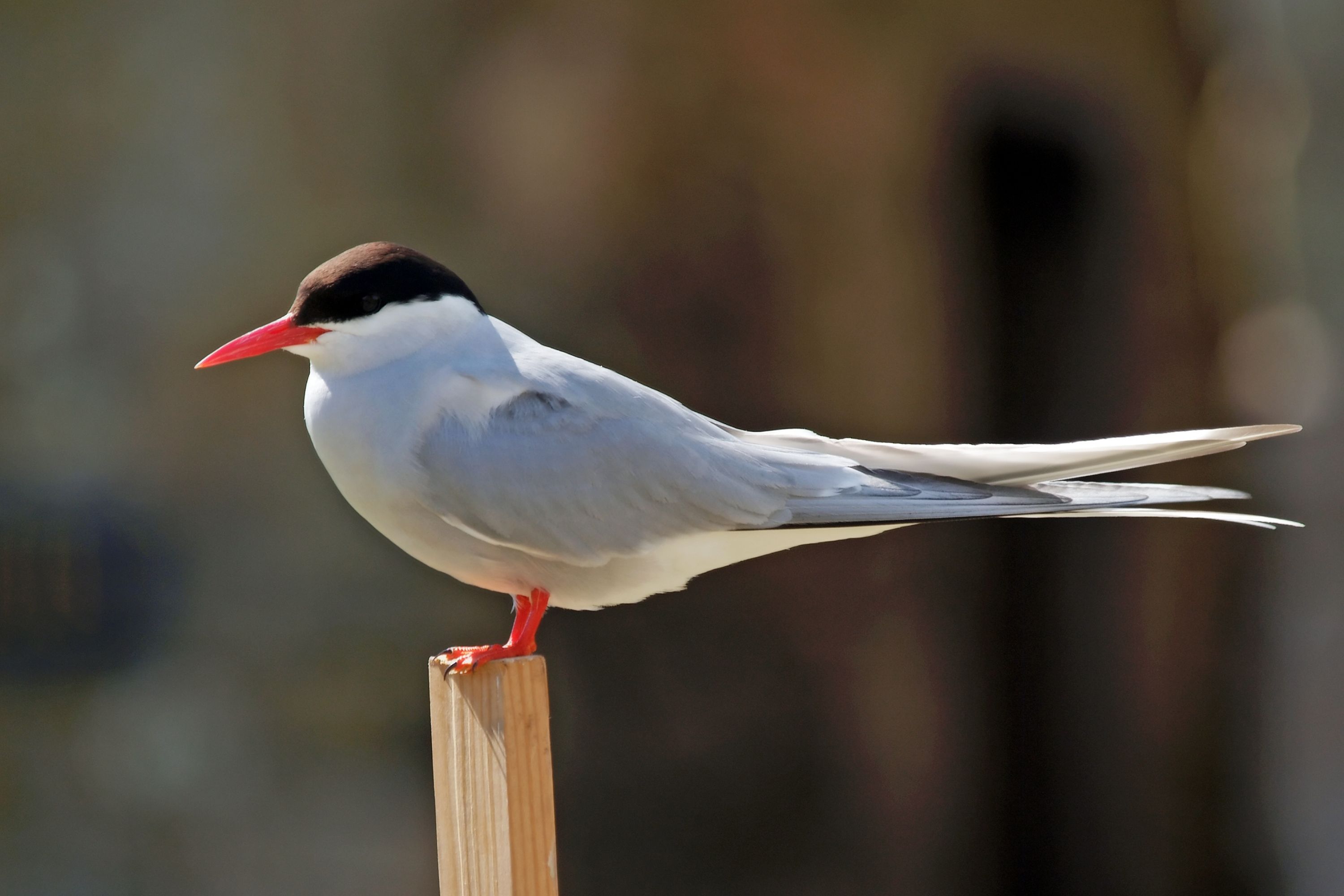Arctic tern
(Sterna paradisaea)

Description
The Arctic tern (Sterna paradisaea) is a tern in the family Laridae. This bird has a circumpolar breeding distribution covering the Arctic and sub-Arctic regions of Europe, Asia, and North America (as far south as Brittany and Massachusetts). The species is strongly migratory, seeing two summers each year as it migrates along a convoluted route from its northern breeding grounds to the Antarctic coast for the southern summer and back again about six months later. Recent studies have shown average annual round-trip lengths of about 70,900 km (44,100 mi) for birds nesting in Iceland and Greenland and about 48,700 km (30,300 mi) for birds nesting in the Netherlands. These are by far the longest migrations known in the animal kingdom. The Arctic tern nests once every one to three years (depending on its mating cycle). Arctic terns are medium-sized birds. They have a length of 28–39 cm (11–15 in) and a wingspan of 65–75 cm (26–30 in). They are mainly grey and white plumaged, with a red/orange beak and feet, white forehead, a black nape and crown (streaked white), and white cheeks. The grey mantle is 305 mm (12.0 in), and the scapulae are fringed brown, some tipped white. The upper wing is grey with a white leading edge, and the collar is completely white, as is the rump. The deeply forked tail is whitish, with grey outer webs. Arctic terns are long-lived birds, with many reaching fifteen to thirty years of age. They eat mainly fish and small marine invertebrates. The species is abundant, with an estimated two million individuals. While the trend in the number of individuals in the species as a whole is not known, exploitation in the past has reduced this bird's numbers in the southern reaches of its ranges. The Arctic tern has a continuous worldwide circumpolar breeding distribution; there are no recognized subspecies. It can be found in coastal regions in cooler temperate parts of North America and Eurasia during the northern summer. During the southern summer, it can be found at sea, reaching the northern edge of the Antarctic ice. The Arctic tern is famous for its migration; it flies from its Arctic breeding grounds to the Antarctic and back again each year, the shortest distance between these areas being 19,000 km (12,000 mi). The long journey ensures that this bird sees two summers per year and more daylight than any other creature on the planet.
Taxonomic tree:







